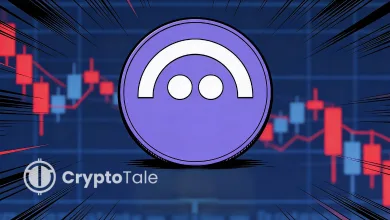Binance Partners with Spain’s BBVA for Custody Solution

- Binance, BBVA partner to secure assets via off-exchange U.S. Treasury custody.
- The success of the Binance-BBVA custody model depends on smooth, scalable execution.
- Off-exchange custody boosts safety but struggles with speed and user adoption.
Binance has collaborated with BBVA to provide an off-exchange custodian for assets to eliminate the exposure to risks of trading through an exchange. This action follows as Binance tries to rebuild its reputation following the payment of $4.3 billion in fines to the U.S. regulators in 2023. BBVA will store client assets in U.S. Treasuries, which Binance accepts as collateral for trading on its platform.
The collaboration places client assets with BBVA, creating a separation between custody and trading activity. Binance seeks to protect user assets from platform-level disruptions by allowing assets to be stored outside its infrastructure. By isolating custody from exchange operations, the firm is trying to prevent a repeat of systemic failures similar to FTX’s collapse. It aligns more closely with traditional finance practices and shifts Binance away from its past model of housing user funds in-house.
Collateral Through Treasuries: A Conservative Approach
The arrangement involves BBVA holding user funds in U.S. Treasuries rather than in digital form on the exchange. Binance uses these treasuries as margins, allowing trading activity while assets remain untouched in custody.
Although the structure seems strong, its efficiency relies on operational efficiency and real-time collateral validation. Other models like this have faced a history of low adoption and friction in the collateral motion. Other exchanges, such as Coinbase and Deribit, have launched similar frameworks, but they have not successfully induced significant user migration.
BBVA offers brand power and regulatory credibility that has the potential to change perception. As one of the leading banks in Spain, its involvement can provide some assurance that old mistakes will not be revisited. However, there is a question as to whether this new model offers actual innovation or a mere makeover.
BBVA’s Brand Power and Technical Limitations
BBVA has increased its crypto presence recently by launching trading and custody in Bitcoin and Ether for Spanish customers. The bank has also recommended that its clients consider up to 7% portfolio exposure to crypto. These measures represent an interest on the part of a more conventional financial institution in the digital asset space.
The deal is distinguished by BBVA’s involvement compared to other third-party custodians, which had fewer financial resources or public awareness. Nevertheless, as history demonstrates, despite all institutional support, success relies on implementation, user experience, and smooth integration. Off-exchange custody is still subject to slow transaction speeds, settlement delays, and user hesitation due to unfamiliar mechanics.
Related: PNC Bank Partners with Coinbase to Launch Crypto Services
A New Standard or Just a Rebranding?
The ongoing move to off-exchange custody by crypto exchanges has been driven by the increasing pressure to provide transparency and security to trading. Binance has already enabled a limited number of customers to custody crypto at Sygnum and FlowBank, but with limited success. Binance previously partnered with Ceffu for custody services, but the arrangement faced criticism over a lack of transparency and questions about its independence.
Binance will seek to restore the trust of users and its regulatory position by joining forces with a household banking brand, BBVA. However, the idea of third-party custodians is not novel, and history indicates a limit to their practicality. Unless major enhancements are made to make it faster and easier to use, the model might not go beyond large traders and institutions.
The FTX bankruptcy story demonstrated the inherent weakness of centralized exchanges in the absence of custody separation. BBVA’s strategy, which may not be the breakthrough that the industry anticipates, responds to the risk posed by Binance. Only time will tell whether this step represents the aspiration of a new standard or a makeover of a preexisting notion.




